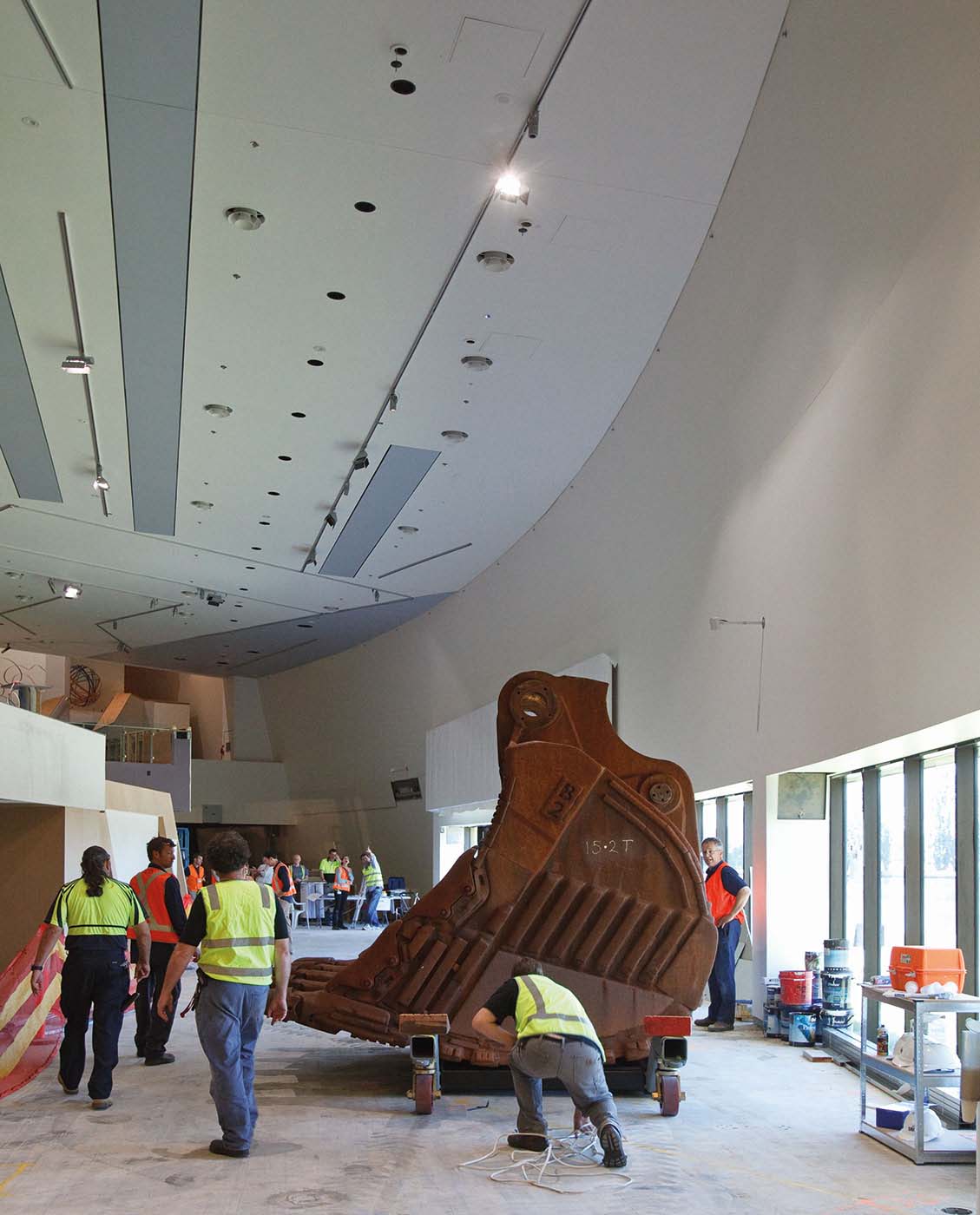In 2003 the Council of the National Museum of Australia initiated a review, known as the Carroll Review, of the Museum’s exhibitions and programs. In one of its resulting recommendations, the review panel advised the Museum to reconsider the selection of themes and narratives for the existing Horizons and Nation galleries. In 2004 the Museum produced the Collections and Gallery Development Plan 2004–08 to address the review’s findings.
The plan proposed redeveloping the Nation gallery to provide a general history of Australia’s economic, social and political conditions. The Museum has continued work on developing and delivering the gallery, renamed Landmarks: People and Places across Australia, over the course of 2010–11. Landmarks opened on 11 June 2011.
Landmarks: People and Places across Australia

The Landmarks gallery explores a broad history of Australia through stories of places and their peoples. The gallery considers 10 themes in Australian life, exploring how each has unfolded in particular places across the country. It looks at how people have engaged with landscapes, flora, fauna and technologies to develop distinctive Australian communities. Landmarks offers an imaginative tour of the country — the opportunity to ‘visit’ different places, to explore how they have emerged, and to ask how, together, they create a history of Australia.
During 2010–11, all gallery elements, including digital and mechanical interactives, were fabricated and installed. Museum staff also completed substantial work conserving and preparing the Museum’s collections for display, negotiating and transporting loans to the Museum and working with external contractors to design mounts and supports for the objects appearing in the gallery.
The gallery features more than 1500 objects, including a Simplex windmill from Kenya station in Queensland, an iron-ore mining bucket from Mount Tom Price in Western Australia, the Holden Prototype No. 1 and Phar Lap’s heart. Other highlights include the stream anchor from HMS Investigator, the Batman Land Deed, a set of early fishhooks made by the Eora people of the Sydney region, and a rare Wedgwood medallion, made from clay sent by Governor Arthur Phillip at Sydney Cove to Sir Joseph Banks in England.
Construction projects
Administration Extension Project
In 2010–11, the Museum committed to a number of major construction projects on the Acton Peninsula site, including the Administration Extension Project. The project comprises an extension to the existing Museum administration wing designed by Ashton Raggatt McDougall. The single-storey extension will provide an additional 920 square metres of office accommodation and seeks to incorporate best practice environmentally sustainable design in materials and energy usage for the building. The new building will link the existing administration wing and the heritage-listed annexe.
The primary aim of this proposal is to free up 650 square metres of existing space, currently used for administrative purposes, to allow more of the Museum’s collection to be on display and accessible to the public. The extension will also provide a more efficient and functional workspace for staff.
Main Hall Project
In 2010–11, the Museum examined potential options to create more effective use of the space in the Main Hall to allow for large objects to be displayed. As a result the café will be redesigned to connect with the lakeside walk. Plans for the café have progressed through a number of stages including design development and construction documentation.
Technology in the galleries
Technology continues to be introduced to enhance the visitor experience within the Museum’s permanent and temporary exhibitions by:
- incorporating interactive touch-screen displays and high definition video within the exhibition spaces
- using tablet technology to provide visitor access to additional content
- enabling visitors to contribute to exhibitions with personal video messages
- providing public internet access capability within the Museum’s temporary exhibitions, enabling visitors to conduct further research
- replacing and updating a range of multimedia equipment across the Museum, including digital video projectors and exhibition multimedia hardware
- introducing wireless technology more widely as a platform for improving Museum productivity and enhancing the visitor experience.